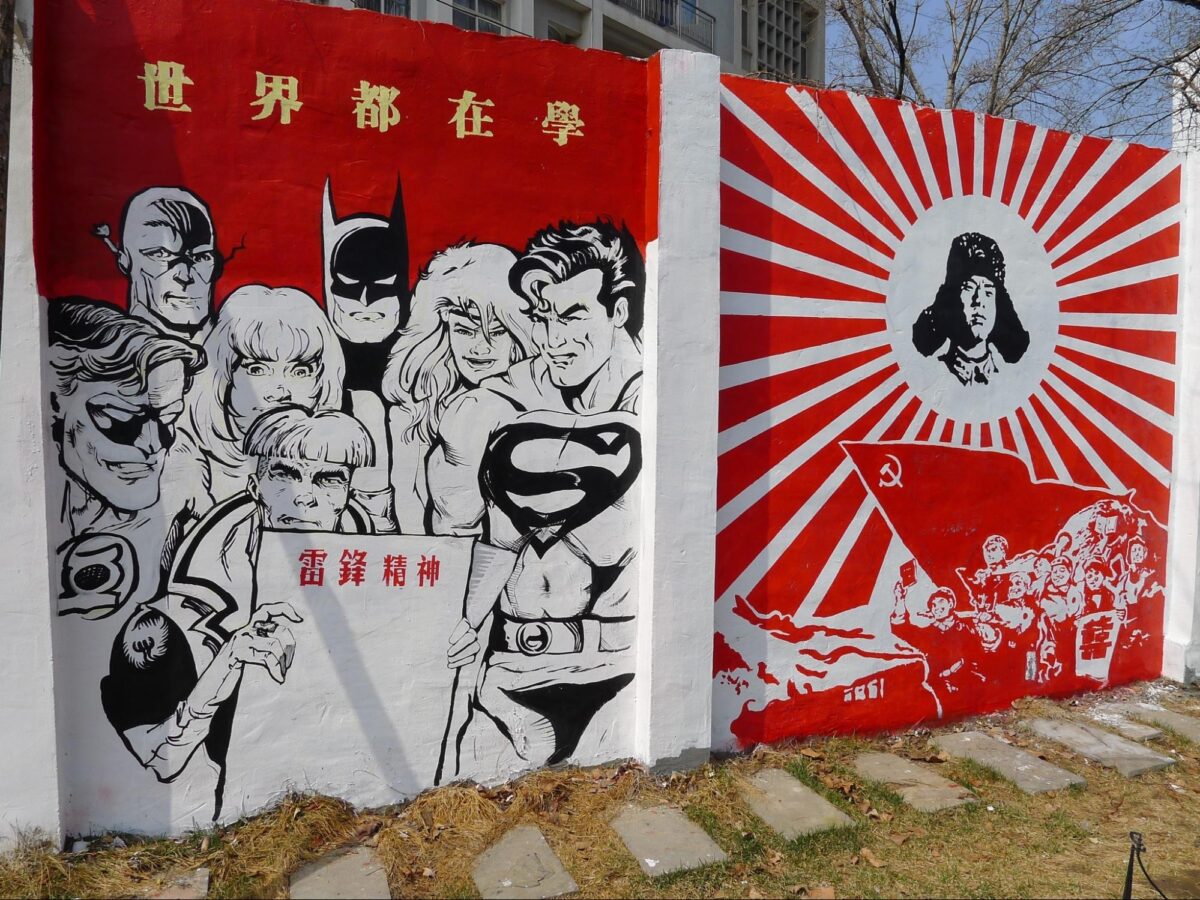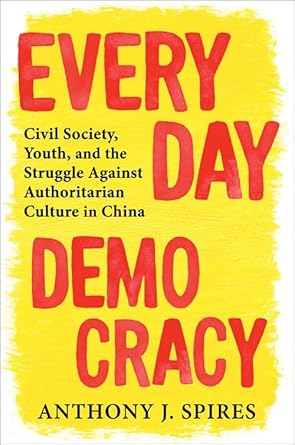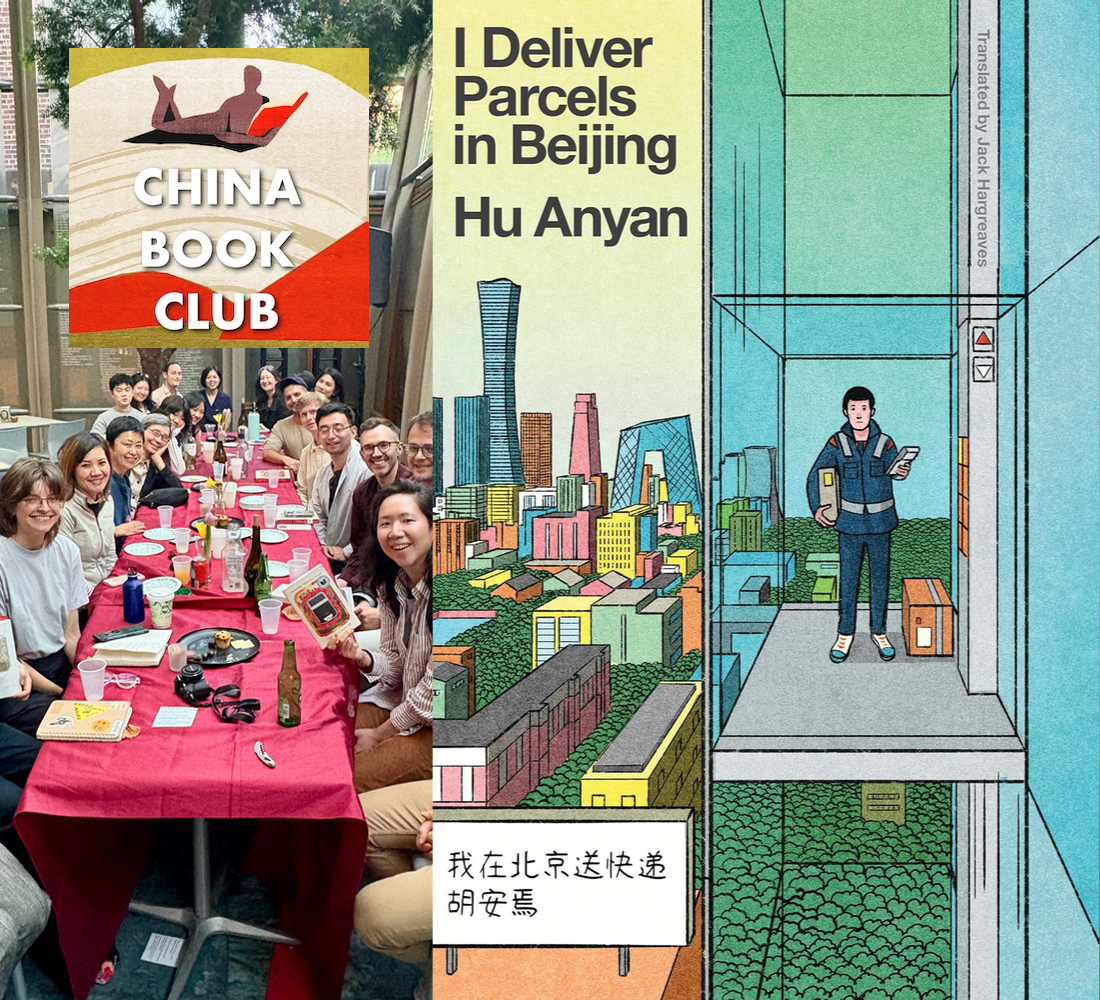Reviewed: Everyday Democracy: Civil Society, Youth, and the Struggle Against Authoritarian Culture in China, Anthony Spires (Columbia University Press, December 2024).
A People’s Daily article, published to coincide with World Volunteer Day on December 5, 2024, crowed that volunteerism has become a powerful force behind China’s modernization. The numbers, as always, stagger. According to China’s Ministry of Culture, China has 238 million registered volunteers across nearly 13 million different projects who’ve donated a collective 5.3 billion hours of their time to others. That’s a lot of Lei Fengs.
The vast majority of these volunteers participate in organizations run or sanctioned by the Chinese Communist Party (CCP). In doing so, they participate, though not necessarily consciously, in the Party’s construction of cultural hegemony: Party-run “volunteer” organizations are designed to shape participants’ views and actions in ways that benefit the CCP and help maintain its rule.
Culture is a more effective, and less costly, way for the Party to maintain day-to-day political control than police-state violence. Party culture includes a number of value propositions: top-down, hierarchical approaches are good; bottom-up, egalitarian ones are bad. Democratic debate and deliberation are burdensome and unnecessary, and only slow down efforts to implement the “right” decision that has been handed down from above. Give-and-take and compromise are signs of weakness. A political fight is either won or lost, with no middle ground in between. As the Chinese idiom goes: You die, I live (你死我活).
To be sure, the Party has never fully succeeded in its efforts to control culture. Post-Mao China is too multi-faceted, too cacophonous. Liberal academics preach constitutionalism, influencing young students at universities across China. Feminist writers and intellectuals push for gender equality, at times breaking through media and internet censorship to win support among citizens. Labor rights activists build ties with workers to demand action when employers refuse to pay wages or protect occupational health and safety. All of these people, and many others, are pushing a view of political culture that is rights-focused, anti-authoritarian, pro-solidarity, and very much at odds with the Party’s vision of citizen engagement.
The effort to construct a liberal counter-culture reached a high water mark in the early 2000s. Take, for example, the rise of small, autonomous civil society organizations. Scores of groups were formed, many of them working on less-sensitive issues such as women’s rights and discrimination cases. They served as the training ground for hundreds of younger rights activists, many of whom embraced innovative approaches to rights advocacy. In some cases, performance art-style protests such as feminist street activism helped lay the groundwork for legislative and policy change, including an anti-domestic violence law in 2015.
Still, the Party’s hierarchical and authoritarian political culture has always been much more influential than those in the counter-cultural vanguard. It shapes public and private decisions, often in very subtle ways. Paradoxically, the Party also lays claim to liberal values in its messaging to Chinese society at large. Among the “core socialist values” plastered on murals across seemingly every wall in China are freedom, democracy, equality and justice. But constant reference to these liberal values is a double-edged sword.
Culture is a more effective, and less costly, way for the Party to maintain day-to-day political control than rank police-state violence.
In his new book Everyday Democracy: Civil Society, Youth, and the Struggle Against Authoritarian Culture in China (Columbia University Press, December 2024), the sociologist Anthony Spires says that in promoting these values, the Party is “encouraging youth to embrace a value system antithetical to authoritarian rule and planting the seeds of its own destruction.”
Spires identifies two youth-led voluntary associations that he claims are building a new form of social relations based on genuinely democratic principles. “Bridges” and “Together” (both pseudonyms furnished by Spires) are university student-run volunteer organizations founded in southern China in the early 2000s. Together focuses on rural development and “social rehabilitation,” a euphemism for ending discrimination against those who’ve contracted an infectious disease. Bridges focuses on education, with volunteers leading art, music and English instruction in rural schools that can ill afford them otherwise. Both, Spires argues, seek to create political-cultural “micro-climates” that exist in tacit opposition to the broader, omnipresent Party-led culture.
According to Spires, these two groups are unique. They have managed to create durable organizational cultures of egalitarianism and genuine democratic participation. Spires, a leading scholar of Chinese civil society, believes that Bridges and Together may be the only two such groups in China that have successfully implemented this model.
This effort to create truly open and non-hierarchical organizations stemmed first and foremost from a rejection of the Party’s own approach to student mobilization and volunteerism. Spires’ book is damning in its account of official volunteer efforts, which are ineffective at best and counter-productive at worst. The cynic in me has often wondered whether the Party intentionally creates formulaic and even coercive “volunteer” structures in order to poison the idea of public service itself — citizens who are taught to see civic engagement as useless might be less likely to push for change. What’s the point of doing so, when such efforts are unlikely to succeed?
Spires sees groups such as Bridges and Together as an antidote to this Party-generated malaise and defeatism. He argues convincingly that these groups are creating a democratic “counter-hegemony,” in the Gramscian sense, that “nurtures and brings to life a range of democratic values, like equality and mutual respect.” Even though their day-to-day work is explicitly apolitical, Spires rightly observes that “these groups are actively contesting the mainstream, authoritarian power relations” that are at the core of the Party’s approach to governance and civic life.
Bridges and Together consciously embrace core liberal values as an integral part of their organizational identity. In selecting new members, for example, volunteers identify those who are genuinely and sincerely interested in the group’s work, rather than merely seeking to burnish their resumes. They also select for people who would embrace the group’s democratic culture, screening out those who “can’t hear other’s views, [or who] … lack a spirit of cooperation.”

Prior experience as a student cadre (学生干部), a nominally prestigious position at the head of a Party-run organization, actually works against applicants, writes Spires, especially if they “talk like a government official.” One student he interviewed openly laughed as they described the transparently fake process of university student union elections, in which pre-screened candidates would make stiff, political speeches. No wonder such formalistic participation turned many students off from the very idea of public service and volunteerism.
In order to preserve the anonymity of the two groups, Spires refrains from any detailed discussion of their work, and doesn’t reference specific members. This is the right approach. All China scholars need to prioritize the safety and security of their Chinese interviewees and partners, and Spires is right to avoid mentioning any details that could lead to state-sponsored harassment or closure of the organizations.
Still, the lack of detail means that we have less of a sense of how effective these groups are, and how their democratic culture informs their grassroots work. Since the book is based on fieldwork that ended in 2017, it’s not clear whether these groups were able to survive the bitterly cold civil society winter that Xi Jinping has imposed on Chinese NGOs. We also don’t get much of a sense of how Bridges and Together volunteers carry their experiences forward into their professional lives. Spires touches on this issue over a few pages, but the lack of specific examples makes it difficult to explore the topic in more depth. Perhaps unavoidably, we don’t get a sense of the volunteers as individual characters — the book lacks the kind of personal detail and anecdote that often drives the best nonfiction writing on China.
While most Western observers have focused on the Party-state’s relationship to — and regular repression of — civil society, Spires’ core argument holds that it is just as important to understand the internal culture and values that civil society groups foster. To that end, Spires focuses on voluntary associations, rather than what he calls “professionalized” non-governmental organizations (NGOs) and government-organized NGOs (GONGOs). He argues that voluntary associations are more likely to promote the “inculcation of the values, skills, and habits of a democratic citizenry.” Drawing on the work of both contemporary scholars of civil society and on classics such as de Tocqueville’s Democracy in America, Spires argues that voluntary associations teach basic democratic values through their day-to-day operations, including such fundamental skills as active listening, persuasion, compromise and consensus-building.
I do wonder whether Spires over-emphasizes the role of internal organizational culture, and overstates its relationship to organizational effectiveness. No doubt, many leading professionalized NGOs are too hierarchical and bureaucratic. In some cases, groups serve as little more than a platform for the work of the group’s charismatic leader. (I’ve also dealt with some groups that could have used more top-down structure and better day-to-day management.) But organizational shortcomings don’t necessarily mean that a group is ineffective, or that its staff aren’t doing important work.
Over the past two decades, I have been in regular contact with dozens of activists, lawyers and volunteers, many of whom work for “professionalized” NGOs whose work Spires questions. None of them are perfect. Most of them are activists and advocates first, and managers and colleagues second. But the best of them do amazing and vital work. They continue to make a difference on the issues they work on, even during these difficult times, including women’s rights, access to education and other, less politically sensitive concerns. Given their numbers — there are dozens of such groups, with thousands of members and supporters, both inside and outside China — they may represent the true face of liberal reform in China.
It’s also not clear whether Bridges and Together have any broader social and political impact. Spires acknowledges the all-too-clear problem of scale, noting that the efforts of the young people he interviews are “not enough” to foster genuine democratic reform. Still, he argues for their relevance as the “social vanguard of bottom-up youth-based social change movements.” No doubt Bridges and Together are in the vanguard, but Spires struggles to articulate exactly why and how these groups contribute to our big-picture understanding of Chinese politics and society.
It’s not clear whether these groups were able to survive the bitterly cold civil society winter that Xi Jinping has imposed on Chinese NGOs.
Without doubt, China could use more groups like Bridges and Together. But the rebuilding of Chinese civil society will no doubt also include groups that are less focused on internal culture, and more focused on their external, rights-focused agenda. For as long as Xi Jinping remains in power, any rebuilding of rights-based grassroots civil society organizations inside the nation seems deeply unlikely. That said, Xi cannot remain in power forever. After he passes from the scene, many rights activists currently keeping a low profile will seek to test the waters, reopening organizations that have been shuttered for years, and dusting off activism strategies that began to show real results during the Hu-Wen era. If these groups are able to return, they could play a significant role in shaping public discourse, and civic life, in the post-Xi era.
As the United States lurches deeper into a political crisis, I found myself wishing that Spires’ book could somehow find its way into the hands of Americans who have no particular interest in China. Many Americans have withdrawn from the key organizations — churches, unions, PTAs — that nurture civic engagement. In part as a result, our political culture has become bruising, caustic and uncaring, and we reject compromise as a sign of weakness — our own version of “you die, I live.”
Since President Trump took office in his second term, this almost nihilistic vision of politics has reached a grim apotheosis. On an almost daily basis, our president tells us that nothing works. His message is clear: genuine belief in the power of public engagement with government is the province of dupes and stooges, or of would-be crooks. This self-serving cynicism then serves as the basis for an unprecedented all-out attack on the institutions of government itself: Why not smash the things that are already broken?
What would the alumni of Chinese volunteer organizations make of our failings in America? I’d love to know, but I can guess that their core recommendation would be clear: Get back to work, organize your fellow citizens, and rebuild. ∎
Header: College students ride 50km from Zhengzhou to Kaifeng, November 2024. (VCG/Getty)

Thomas E. Kellogg is Executive Director of the Georgetown Center for Asian Law. He writes widely on human rights, rule of law and civil society development in China. His work has appeared in a broad range of scholarly and public-facing publications, including the Washington Post, Foreign Policy and Initium.



